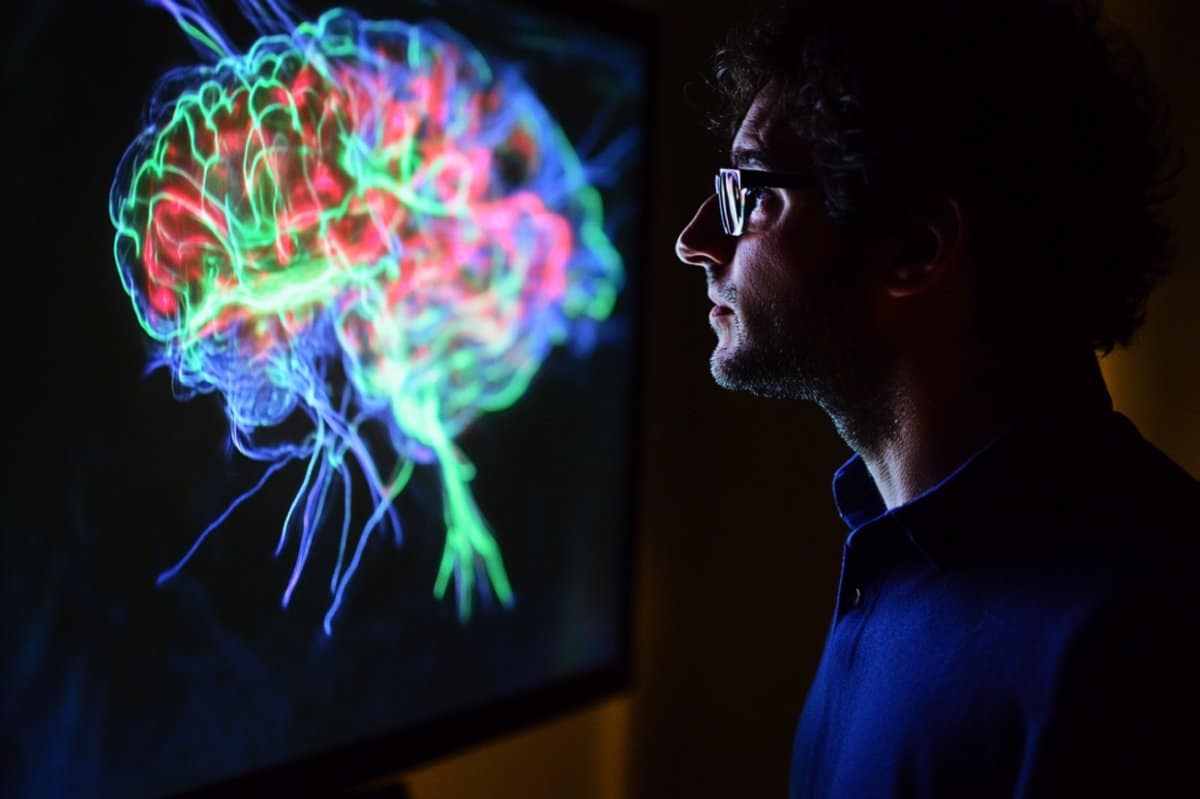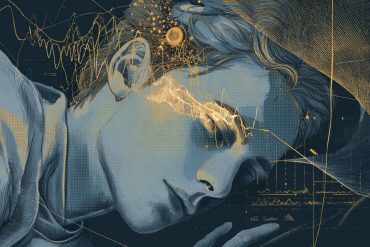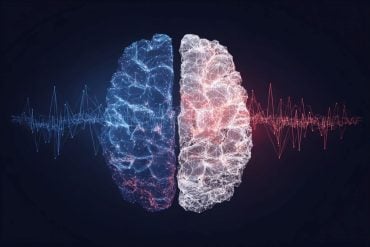Summary: The brain uses two separate dopamine-based learning systems: one for evaluating outcomes and another for reinforcing repeated actions. Known as reward prediction error (RPE) and action prediction error (APE), these systems help explain how habits form and why they can become difficult to break.
While RPE helps us learn from outcomes, APE strengthens behaviors we repeat often, enabling more efficient multitasking by freeing up cognitive resources. The study showed that damage to the brain’s tail of the striatum, where APE is encoded, prevents mice from forming habits, indicating this region’s essential role in habitual learning.
Key Facts:
- Second Learning System Identified: Action prediction error (APE) allows habits to form by reinforcing frequent actions.
- Brain Region Implicated: The tail of the striatum plays a key role in habitual learning and is distinct from regions tied to outcome-based decisions.
- Clinical Potential: Insights may help develop treatments for addiction and Parkinson’s by targeting the APE system.
Source: Sainsbury Wellcome Center
Neuroscientists at the Sainsbury Wellcome Centre (SWC) at UCL have discovered that the brain uses a dual system for learning through trial and error.
This is the first time a second learning system has been identified, which could help explain how habits are formed and provide a scientific basis for new strategies to address conditions related to habitual learning, such as addictions and compulsions.
Published today in Nature, the study in mice could also have implications for developing therapeutics for Parkinson’s.

“Essentially, we have found a mechanism that we think is responsible for habits. Once you have developed a preference for a certain action, then you can bypass your value-based system and just rely on your default policy of what you’ve done in the past.
“This might then allow you to free up cognitive resources to make value-based decisions about something else,” explained Dr Marcus Stephenson-Jones, Group Leader at SWC and lead author of the study.
The researchers uncovered a dopamine signal in the brain that acts as a different kind of teaching signal to the one previously known.
Dopamine signals in the brain were already understood to form reward prediction errors (RPE), where they signal to the animal whether an actual outcome is better or worse than expected. In this new study, the scientists discovered that, in parallel to RPE, there is an additional dopamine signal, called action prediction error (APE), which updates how often an action is performed.
These two teaching signals give animals two different ways of learning to make a choice, learning to choose either the most valuable option or the most frequent option.
“Imagine going to your local sandwich shop. The first time you go, you might take your time choosing a sandwich and, depending on which you pick, you may or may not like it.
“But if you go back to the shop on many occasions, you no longer spend time wondering which sandwich to select and instead start picking one you like by default. We think it is the APE dopamine signal in the brain that is allowing you to store this default policy,” explained Dr Stephenson-Jones.
The newly discovered learning system provides a much simpler way of storing information than having to directly compare the value of different options. This might free up the brain to multi-task.
For example, once you have learned to drive, you can also hold a conversation with someone during your journey. While your default system is doing all the repetitive tasks to drive the car, your value-based system can decide what to talk about.
Previous research discovered the dopamine neurons needed for learning reside in three areas of the midbrain: the ventral tegmental area, substantia nigra pars compacta, and substantia nigra pars lateralis.
While some studies showed that these neurons were involved in coding for reward, earlier research found that half of these neurons code for movement, but the reason remained a mystery.
RPE neurons project to all areas of the striatum apart from one, called the tail of the striatum. Whereas the movement-specific neurons project to all areas apart from the nucleus accumbens.
This means that the nucleus accumbens exclusively signals reward, and the tail of the striatum exclusively signals movement.
By investigating the tail of the striatum, the team were able to isolate the movement neurons and discover their function.
To test this, the researchers used an auditory discrimination task in mice, which was originally developed by scientists at Cold Spring Harbor Laboratory. Co first authors, Dr Francesca Greenstreet, Dr Hernando Martinez Vergara and Dr Yvonne Johansson, used a genetically encoded dopamine sensor, which showed that dopamine release in this area was not related to reward, but it was related to movement.
“When we lesioned the tail of the striatum, we found a very characteristic pattern. We observed that lesioned mice and control mice initially learn in the same way, but once they get to about 60-70% performance, i.e. when they develop a preference (for example, for a high tone go left, for a low tone, go right), then the control mice rapidly learn and develop expert performance, whereas the lesioned mice only continue to learn in a linear fashion.
“This is because the lesioned mice can only use RPE, whereas the control mice have two learning systems, RPE and APE, which contribute to the choice,” explained Dr Stephenson Jones.
To further understand this, the team silenced the tail of striatum in expert mice and found that this had a catastrophic effect on their performance in the task.
This showed that while in early learning animals form a preference using the value-based system based on RPE, in late learning they switch to exclusively use APE in the tail of striatum to store these stable associations and drive their choice.
The team also used extensive computational modelling, led by Dr Claudia Clopath, to understand how the two systems, RPE and APE, learn together.
These findings hint at why it is so hard to break bad habits and why replacing an action with something else may be the best strategy.
If you replace an action consistently enough, such as chewing on nicotine gum instead of smoking, the APE system may be able to take over and form a new habit on top of the other one.
“Now that we know this second learning system exists in the brain, we have a scientific basis for developing new strategies to break bad habits. Up until now, most research on addictions and compulsions has focused on the nucleus accumbens.
“Our research has opened up a new place to look in the brain for potential therapeutic targets,” commented Dr Stephenson Jones.
This research also has potential implications for Parkinson’s, which is known to be caused by the death of midbrain dopamine neurons, specifically in substantia nigra pars compacta. The type of cells that have been shown to die are movement-related dopamine neurons, which may be responsible for coding APE.
This may explain why people with Parkinson’s experience deficits in doing habitual behaviours such as walking, however they do not experience deficits in more flexible behaviours such as ice skating.
“Suddenly, we now have a theory for paradoxical movement in Parkinson’s. The movement related neurons that die are the ones that drive habitual behaviour.
“And so, movement that uses the habitual system is compromised, but movement that uses your value-based flexible system is fine. This gives us a new place to look in the brain and a new way of thinking about Parkinson’s,” concluded Dr Stephenson-Jones.
The research team is now testing whether APE is really needed for habits. They are also exploring what exactly is being learned in each system and how the two work together.
Funding: This research was funded by an EMBO Long-Term Fellowship (ALTF 827-2018), a Swedish Research Council International Postdoc Grant (2020-06365), the Sainsbury Wellcome Centre Core Grant from the Gatsby Charitable Foundation and Wellcome (219627/Z/19/Z), the Sainsbury Wellcome Centre PhD Programme, and a European Research Council grant (Starting #557533).
About this habit formation and neuroscience research news
Author: April Cashin-Garbutt
Source: Sainsbury Wellcome Center
Contact: April Cashin-Garbutt – Sainsbury Wellcome Center
Image: The image is credited to Neuroscience News
Original Research: Open access.
“Dopaminergic action prediction errors serve as a value-free teaching signal” by Marcus Stephenson-Jones et al. Nature
Abstract
Dopaminergic action prediction errors serve as a value-free teaching signal
Choice behaviour of animals is characterized by two main tendencies: taking actions that led to rewards and repeating past actions.
Theory suggests that these strategies may be reinforced by different types of dopaminergic teaching signals: reward prediction error to reinforce value-based associations and movement-based action prediction errors to reinforce value-free repetitive associations.
Here we use an auditory discrimination task in mice to show that movement-related dopamine activity in the tail of the striatum encodes the hypothesized action prediction error signal.
Causal manipulations reveal that this prediction error serves as a value-free teaching signal that supports learning by reinforcing repeated associations.
Computational modelling and experiments demonstrate that action prediction errors alone cannot support reward-guided learning, but when paired with the reward prediction error circuitry they serve to consolidate stable sound–action associations in a value-free manner.
Together we show that there are two types of dopaminergic prediction errors that work in tandem to support learning, each reinforcing different types of association in different striatal areas.






